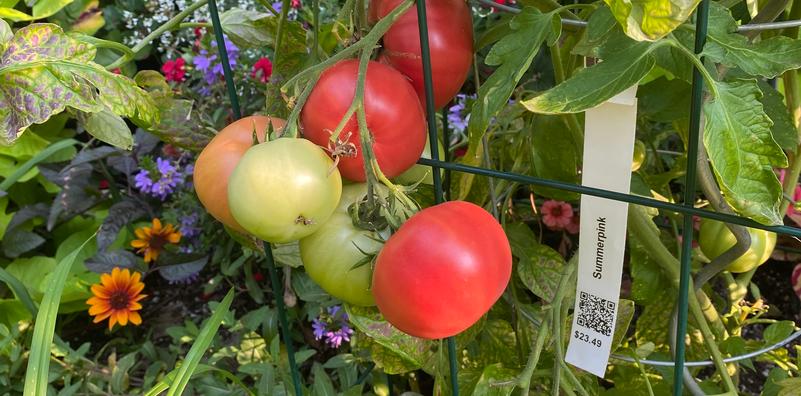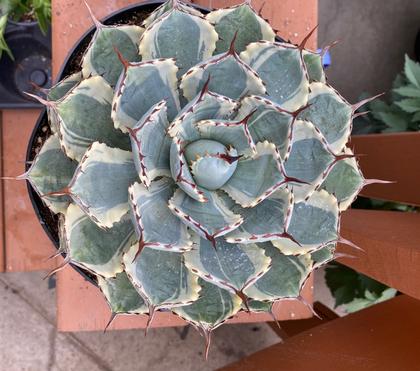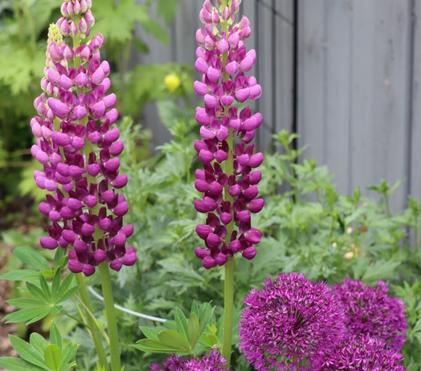Freezing and Drying Late Season Garden Bounty
Tis the season of ‘do I or don’t I’ cover the tomatoes. The first forecasted temperature near zero came a few nights ago, but I had already decided that I was not quite ready to dig in the garden shed to find my supply of old sheets. After a brisk walk with the dog in the cold evening air, I erred on the side of caution and covered them up. Needlessly, as it turned out, but the sheets are now at the ready for when the frost does come.

Freezing and Drying Late Season Garden Bounty
I like to leave my tomato plants standing for as long as possible in case we get an extended warm fall. The dwindling hours of weakening sunlight mean that the plants won’t produce in the same way as they would in late summer, but I have often been surprised by the number of tomatoes that mature on the plant right up to the first killing frost. This is a vegetable that will happily ripen in your kitchen so harvest them all now if you are not into playing the cover-up game. There are countless ways in which to preserve excess tomatoes, but my favourite way is to give them a quick rinse, then chop them and freeze in containers. They are perfect for adding to soups and sauces, or any recipe that calls for cooked tomatoes.
Hot peppers are another vegetable I like to grow. I try new varieties of heirloom, or open-pollinated ones each year so I can save the seed if the peppers are tasty, and the plants grow well. I never get enough for a whole lot of anything, but they do dry well. I cut them open, remove the seeds and pith, slice into halves or quarters, and then crosshatch the flesh to prevent the pieces from curling up at the sides. I dehydrate them and coarsely grind into a mix. I keep this in a little jar beside my cooktop to sprinkle on anything that needs a pop of heat.
Kale and Swiss chard are cool weather vegetables that can withstand light frosts and even light snowfall. Some say that the taste improves after a kiss of frost. I keep harvesting leaves as I need them and collect the last ones right before the first hard frost. Both can be frozen in bags or containers, but they store better if first blanched in boiling water. Package them in portion sizes that you are most likely to use in recipes that call for cooked leafy greens. I dehydrated my red kale crop last fall and ended up with a two-quart jar full of crunchy kale bits that I sprinkled into soups, on salads, and added to smoothies. The wretched cabbage caterpillars did a real number on my kale this year, so those plants went into the compost bin a couple of weeks ago. My crop of rainbow Swiss chard is abundant and healthy, so I am going to try dehydrating that in the weeks to come.
Leeks are another cold tolerant late season crop that I am adding to my list of must-grow vegetables. I first grew them last year and ended up with an unexpectedly big crop that I had to harvest all at once, so I had to find a way to preserve them. I learned that freezing was not an option as they turn bitter and mushy, so I sliced them, both white and green parts, into narrow circles. I washed them thoroughly several times, drained for a couple of hours in a mesh strainer, and then dehydrated them. Wow. I was delighted with the results. They were cut fine enough that I could add them to scrambled eggs for a nice leeky flavour without having to soak for more than a couple of minutes in the egg mixture. I added them to any recipe that needed a punch of flavour, and sadly finished the two-quart jar by mid-winter. I am hoping that this year’s crop lasts a little longer.
Herbs are the other main crop I harvest every year. I grow a wide variety of annual and perennial herbs, both for the leaves and the flowers. Many kinds of small beneficial insects and pollinating flies, wasps and bees are attracted by the small composite blooms, so I always make sure to let the plants flower during the season.
On the annual front, basil rarely grows well for me, so parsley is my standby for pesto that I freeze in small jars for a taste of summer in January. I also dry or chop and freeze the leaves. Cilantro is another herb that defeats me every year. It grows so fast that I rarely catch it in tender leaf form. Instead, I have learned to let it grow tall, flower, and set seed. I then have a nice crop of coriander seeds – which I use a lot in my cooking. Dill always gets away from me too, but when I manage to get enough young leaves, I simply freeze them in a container and keep adding them as the summer goes on. I collect some seed for cooking, and the birds eat some, but I am always guaranteed a good supply of seed that will grow as it pleases next summer.
Lemon thyme, common thyme, Greek oregano, winter savoury, and sage all overwinter in my garden. Ensuring that the soil is moist before freeze-up and that the plants are covered with a good layer of chopped leaves and snow for the entire winter seems to do the trick. I collect the herb leaves throughout the summer, and dry in paper bags in a warm dry place – either in my garden shed or in the warmest room in the house. I shake the bags every day to fluff them up and to ensure good air circulation. It takes a week or so depending on the type of leaf – the small fine thyme leaves take about a week to fully dry, whereas the thicker leaves of rosemary and sage take a little longer. Once fully dry I store them in jars in a cool dark cupboard where they keep well for about a year.

